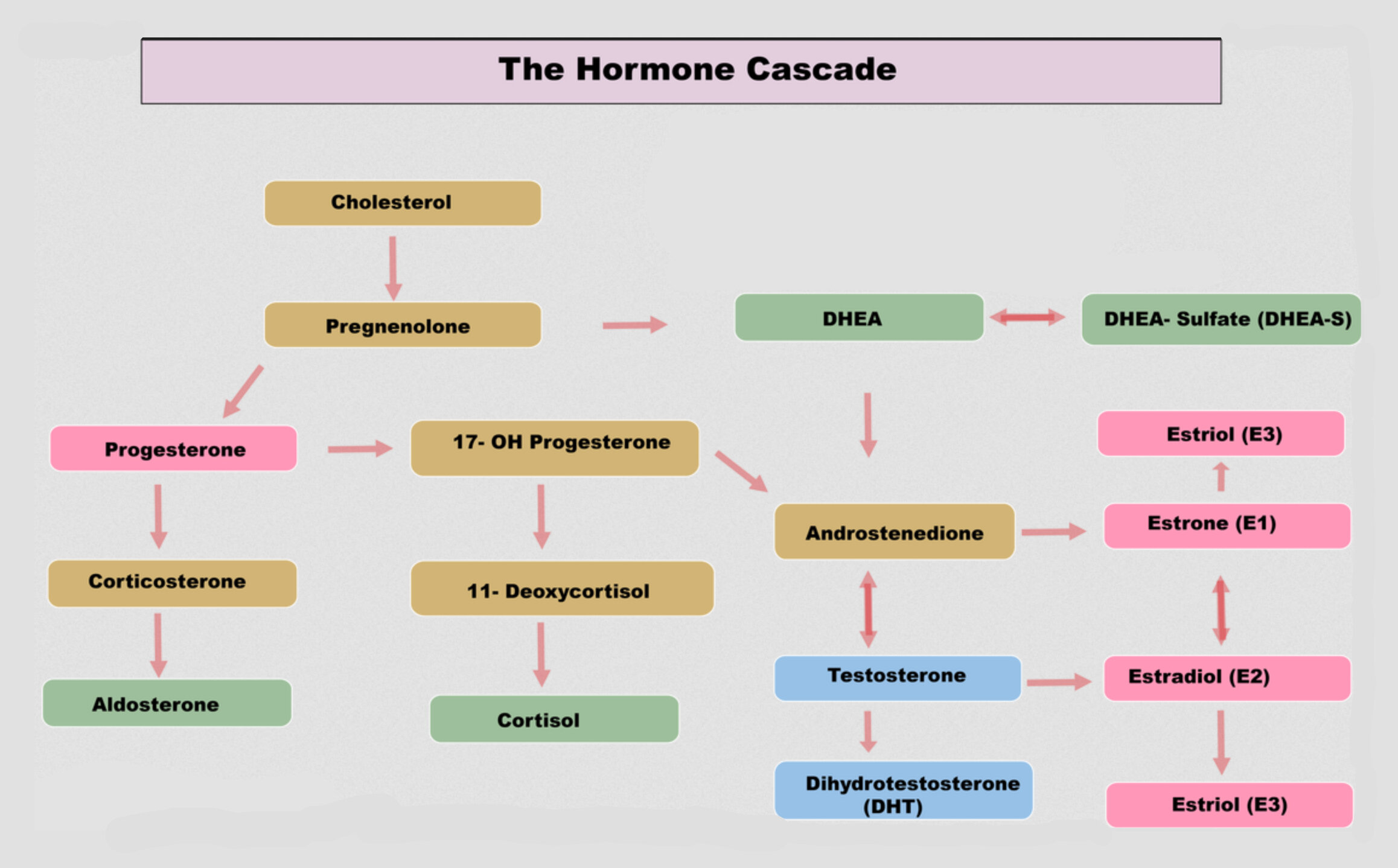The Daily Raw Carrot
by Ryan heeney / March 11th, 2022
If there was ever a food that could be considered more of a medicine than a food, it would be the raw carrot.
If you've ever forgotten about a bag of carrots in the back of the fridge and come across them some weeks later, sometimes you’ll pleasantly surprised to see that they haven't gone bad despite sitting for such a long time. The reason for this impressive shelf life are the powerful antibacterial and antifungal properties that carrots possess.
Since carrots grow below ground, they produce their own fungicides and bacteriostats to protect themselves from bacteria and other pathogens in the soil. These antifungal and antibacterial properties are so potent in carrots that they make them especially unique among most other fruits and vegetables. So when you eat a raw carrot, these same antibacterial and antifungal properties that protect the carrot in the soil, have a similar protective function in us as well.
Ray Peat, PhD does such a great job explaining the beneficial effects of raw carrots that I thought I would just let him explain below:
“One vegetable has a special place in a diet to balance the hormones, and that is the raw carrot. It is so nearly indigestible that, when it is well chewed or grated, it helps to stimulate the intestine and reduce the reabsorption of estrogen and the absorption of bacterial toxins. In these effects on the bowel, which improve hormonal balance, a carrot salad resembles antibiotic therapy, except that the carrot salad can be used every day for years without harmful side-effects. Many people find that daily use of the raw carrot eliminates their PMS, headaches, or allergies. The use of oil and vinegar as dressing intensifies the bowel-cleansing effect of the salad."
...
“Endotoxin formed in the bowel can block [cellular] respiration and cause hormone imbalances contributing to instability of the nerves, so it is helpful to optimize bowel flora, for example with a carrot salad; a dressing of vinegar, coconut oil or olive oil, carried into the intestine by the carrot fiber, suppresses bacterial growth while stimulating healing of the wall of the intestine. The carrot salad improves the ratio of progesterone to estrogen and cortisol, and so is as appropriate for epilepsy as for premenstrual syndrome, insomnia, or arthritis. There are interesting associations between vegetable “fiber” and estrogens. Because of my own experience in finding that eating a raw carrot daily prevented my migraines, I began to suspect that the carrot fiber was having both a bowel-protective and an antiestrogen effect. Several women who suffered from premenstrual symptoms, including migraine, had their serum estrogen measured before and after the “carrot diet,” and they found that the carrot lowered their estrogen within a few days, as it relieved their symptoms. Indigestible fiber, if it isn’t broken down by bowel bacteria, increases fecal bulk, and tends to speed the transit of material through the intestine, just as laxatives do. But some of these “fiber” materials, e.g., lignin, are themselves estrogenic, and other fibers, by promoting bacterial growth, can promote the conversion of harmless substances into toxins and carcinogens. When there is a clear “antiestrogen” effect from dietary fiber, it seems to be the result of accelerated transit through the intestine, speeding elimination and preventing reabsorption of the estrogen which has been excreted in the bile. Laxatives have this same effect on the excretion of estradiol. Inhibiting bacterial growth, while optimizing intestinal resistance, would have no harmful side effects. Preventing excessive sympathetic nervous activity and maintaining the intestine’s energy production can be achieved by optimizing hormones and nutrition. Something as simple as a grated carrot with salt and vinegar can produce major changes in bowel health, reducing endotoxin absorption, and restoring constructive hormonal functions.”
Above, Dr. Peat goes into the fact that of the health benefits of eating the raw carrot is the fact that it lowers estrogen, and while that may sound good to the male population, the female population might wonder how this benefits them too. The more I learn about estrogen, the more I am figuring out how misunderstood this hormone might be.
Don’t get me wrong, estrogen is absolutely essential in a woman when creating life. One of estrogen’s main functions is tissue proliferation (tissue growth), and when you think about it, a growing baby and uterine proliferation within a woman is the definition of increased tissue growth. It is estrogens job to grow new life inside of the mother. But this again comes back to the theme of the body using a hormone only at the appropriate time. In the cases when estrogen becomes chronically elevated, is when it becomes a very detrimental hormone.
The main problem comes when the woman (or man with issues of high estrogen) isn’t pregnant and tissue proliferation occurs anyway. The ultimate hallmark feature of uncontrolled tissue proliferation is something everyone is familiar with… cancer.
Increased levels of estrogen have been linked to many cancers, but especially breast cancer. This is one of the reasons I’m VERY weary of estrogen based birth controls. Basically what birth control is is a large daily dose of estrogen.
In terms of it’s helpful feminizing effects, progesterone seems to be the hormone that could really be thought of as the “true female hormone”, with healthy levels of progesterone basically keeping estrogen’s functions “in check” (like estrogen’s role in tissue proliferation mentioned earlier).
If you have the time, Kyle Mamounis, PhD describes this concept really nicely here and I think it’s really worth a listen:
To begin to understand how the confusion about estrogen may have started, Kyle Mamounis does another wonderful job at describing exactly how this occured. I know the clips are about 10 minutes long, but if you have the time I really believe you would find them worth listening to:
At one point above he describes postmenopausal women showing low levels of estrogen in their blood, but what most doctors fail to realize is that while serum estrogen can be low, estrogen within the cells can be very high. This creates a situation where doctors are often adding gasoline to a fire.
Part of the confusion lies in the fact that there really four “estrogens”. As you can see from the hormonal cascade chart below, there actually isn’t a hormone labeled “estrogen”. Estrogen is just the term given to the four steroid hormones estrone (E1), estradiol (E2), estriol (E3) and estetrol (E4).
Typically estradiol (E2) can be very low in a women’s blood labs, while estrone (E1) might be sky high within her cells. So while the doctor sees low levels of estradiol in her blood labs, he fails to realize the levels of estrone could be extremely elevated in her tissue. In my opinion, adding progesterone to the ALREADY HIGH levels of estrogen in the body would greatly reduce postmenopausal issues and discomforts instead of adding more estrogen to levels that are most likely already high.
Georgi Dinkov breaks this topic down further in his post titled, “While Estradiol Falls, Estrone Rises With Age And Is Much More Relevant For Estrogen-driven Diseases” and that can be found here:
But back to the carrot.
An important distinction to make is that it is the fiber of the carrot that is beneficial and not its juice. The carotene in a carrots juice is actually fairly anti-metabolic and should not be consumed in excess. The carrot being so "indigestible" means much of the carotene is actually not absorbed by the body. So ditch the juicer on this one, and just eat the carrot whole.
Also, this is a rare case where you do want to eat this vegetable raw. The carrot's fibers will do their magic in their raw state, as opposed to being cooked.
How often should I eat the raw carrot?
I would say just once a day is plenty. Those who feel there problems are severe enough could try it twice a day.
Also, as mentioned above, Dr. Peat's recommendation is to grate the carrot lengthwise for maximum effects of the fibers in the intestine, and having it with a little refined coconut oil and white vinegar will increase its benefits as well. The saturated fat of the coconut oil increases the antibacterial, antifungal, and antiviral effects of the carrot salad. You could say the fat from the oil synergizes with the carrot salad to keep the intestine even lower on pathogens.
I also find salt to be a great addition for taste.
Some suggest eating the raw daily carrot between meals for maximum benefits. Also, while some choose to go the "carrot salad" route, others prefer to keep it simple and just munch on the carrot plain. While the “carrot salad” may yield more of a benefit than just a carrot alone, I like how nutrition author Kate Deering sums it up... "at the end of the day, just eat the carrot."
Here is how nutrition researcher Danny Roddy prepares his daily raw carrot:
A very similar, important food that must be included in the same category of the raw carrot is well cooked white button mushrooms.
White button mushrooms have a very similar “sanitizing” effect on the intestine as the raw carrot—and may be even be more potent.
It’s important to boil mushrooms anywhere between 1-3 hours as they contain a chemical called “hydrazine”, which is a well-known toxin and is classified by the EPA as a “probable human carcinogen”. Thoroughly cooking mushrooms removes nearly all the hydrazine and you are left with a terrific source of fiber that rivals the carrot.
I personally prefer mushrooms over the carrot just because of the fact I love mushrooms so much, but find both the carrot and mushrooms to be pretty delicious. The cooking time of mushrooms is kind of a pain so I’ll boil them in bulk so I have enough for the week and will store them in the refrigerator for up to 7 days. When I’m ready to have some with a meal I’ll just pan fry some in butter or coconut oil, add some salt or Tamari soy sauce (gluten free) and I’m done. It’s very convenient this way and I find they make just about any meal taste better.
Well cooked mushrooms probably deserve an article all on their own but as beneficial of a fiber as they are I thought they should be mentioned alongside the carrot.
If either of those foods aren’t appetizing for you or don’t agree with you, cooked bamboo shoots share many of the same properties as the raw carrot and well cooked mushrooms.
Related Studies and Materials:
https://academic.oup.com/ajcn/article-abstract/32/9/1889/4692446
https://pubmed.ncbi.nlm.nih.gov/8144415/
https://www.functionalps.com/blog/2012/09/28/ray-peat-phd-on-the-benefits-of-the-raw-carrot/
https://onlinelibrary.wiley.com/doi/full/10.1111/j.1541-4337.2011.00147.x
https://raypeatforum.com/community/threads/osteoarthritis-oa-is-driven-by-endotoxin-can-be-completely-reversed.23593/#post-334793
“Unlike rheumatoid arthritis (RA), its "cousin" known as osteoarthritis (OA) is not generally believe to be due to chronic inflammation. The official cause of OA is "unknown" (just like RA) but often cited factors include genetics, excess weight, and advanced age.
The study below (https://insight.jci.org/articles/view/95997) points the finger at endotoxin once again and shows that improving gut barrier lowers endotoxin levels and is beneficial for OA. In fact, the treatment completely reversed the symptoms of OA even in the presence of continued obesity, which suggests obesity is not a direct cause of OA. The study used prebiotic supplementation to lower endotoxin, but I thin safer approaches include charcoal, carrot, and possible serotonin antagonists.” - Researcher Georgi Dinkov


